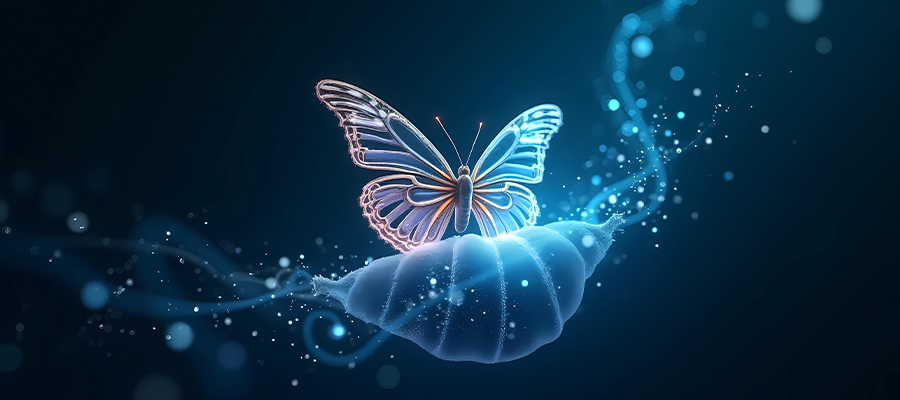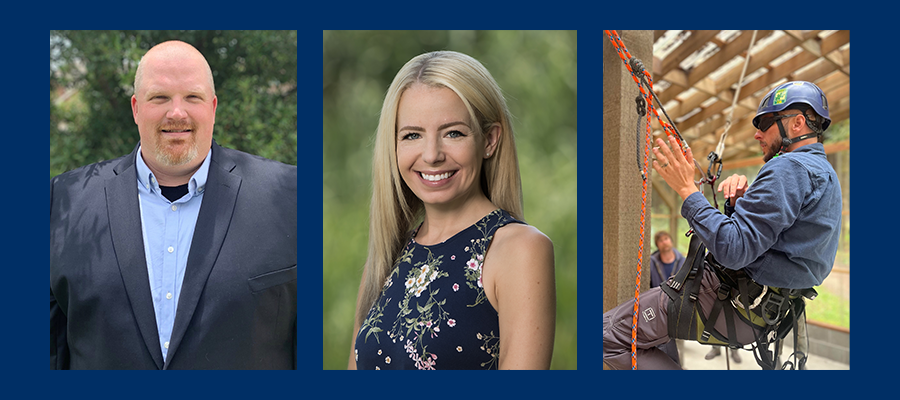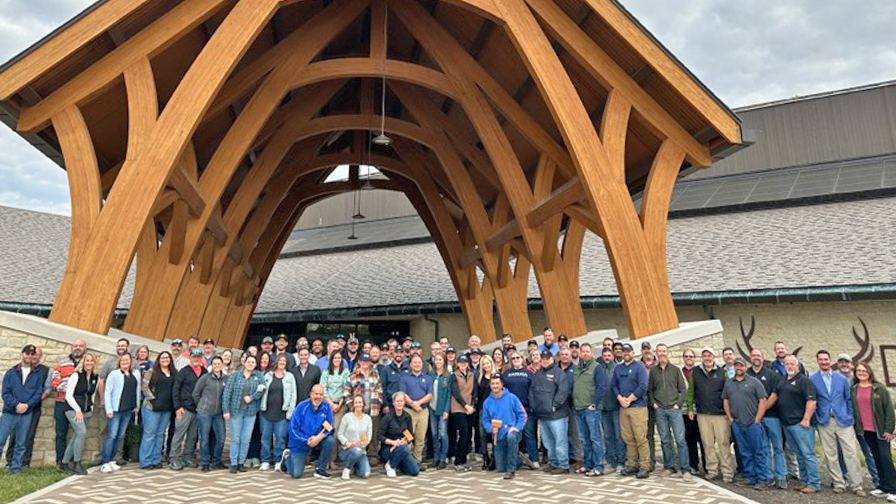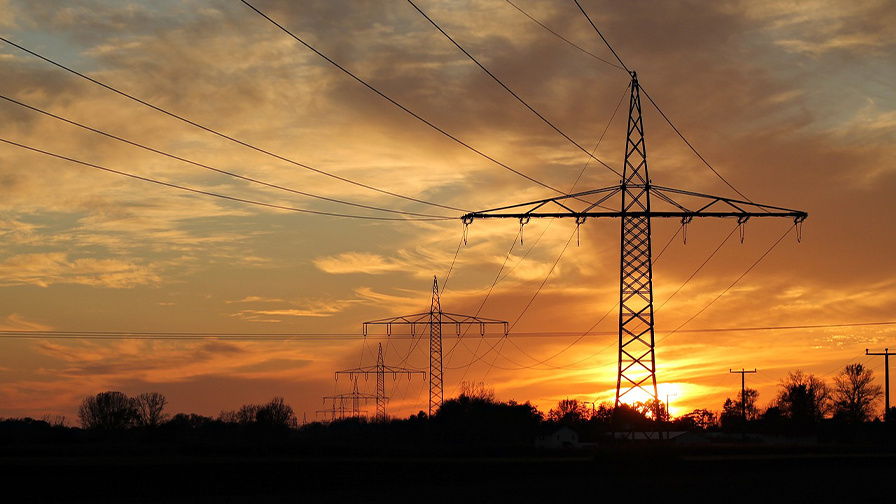The Electric Butterfly: Reconnecting with Nature on the Edges

The Electric Butterfly: Reconnecting with Nature on the Edges
By Ryan Meccage, Business Development Manager, ACRT Services
In an age dominated by smartphones, constant connectivity, and algorithm-driven content, we’ve never been more digitally immersed. Yet somehow, we’ve also never felt so far removed from the natural world beneath our feet. The urge to step away from screens and re-establish a deeper connection with nature feels more important than ever. That reconnection doesn’t have to happen in remote national parks or the wilderness. Some of the most powerful moments with nature can occur in the spaces most people overlook — utility rights-of-way (ROWs).
One afternoon, I was walking along a stretch of transmission ROW that sliced through a forest. The corridor was sunny, with milkweed and goldenrod growing along the sides. Dragonflies flew close to the ground, and birds made noise from the nearby brush. A worn path went up a small hill, with the sound of power lines in the background.
Something small caught my eye on a milkweed leaf. I crouched to take a closer look and saw a caterpillar making its slow, deliberate way along the stem. I stayed and watched as it began spinning silk, preparing for its transformation. Beneath the steady current of electricity above, nature was working through its age-old process, slow and sure.
In that quiet moment, I found myself thinking about how disconnected we’ve become from that kind of natural transformation. The caterpillar knew exactly what it needed to do. It followed instinct, not instruction. Meanwhile, we humans seem to be in the middle of our own metamorphosis — one driven not by biology, but by data. Technology is reshaping how we live and how we think. In industries like UVM, we now rely on artificial intelligence to process huge amounts of data. The more we integrate it, the more it seems our progress depends on it.
But what exactly are we becoming? The caterpillar dissolves into something unrecognizable before emerging as a butterfly. Are we undergoing our own kind of breakdown and rebuilding? If so, what guides us? Is it instinct, or code? Are we evolving, or are we rushing forward without a clear destination?
The caterpillar didn’t hesitate. It trusted the process. Transformation, no matter how uncertain, was simply part of what it was meant to do. And in many ways, our most advanced technologies mirror the natural world. Machine learning is modeled after the human brain. Swarm intelligence takes cues from bees. Soft robotics imitates octopuses. Nature is not separate from innovation. It is the foundation of it.
These walks tend to invite big questions. According to recent data from the National Electrical Manufacturers Association, electricity demand in the U.S. is expected to rise by about two percent each year, driven largely by data centers and electric transportation. By 2050, demand could increase by 50%. Will nuclear energy return to the forefront? Will trenchless plasma boring reduce the need for overhead power lines and ease environmental impacts? It’s hard to say. But one thing remains true: in both ecosystems and human systems, energy shapes growth.
My daughter’s favorite book is The Very Hungry Caterpillar by Eric Carle. If you’re a parent, you probably know it. The little caterpillar eats more and more, growing stronger with each meal until he finally transforms. That story feels more real to me now. We are constantly consuming information, energy, and technology, all in the name of growth. Maybe we are not so different from that hungry little caterpillar.
As I continued walking, the caterpillar stayed in my thoughts. I started to notice other things along the trail. There were clusters of fungi, a hawk circling above, and fox tracks pressed into the mud. This corridor, often seen as disturbed or artificial, was full of life. Because it’s mostly overlooked, animals move through it freely. Deer pass without much interference, pollinators are drawn to the open space, and sunlight allows plants to grow that might not survive in the shade of the forest.
We tend to search for nature in untouched places — mountains, forests, oceans. But there’s something special about the edges. These in-between spaces are where real reconnection can happen. Nature doesn’t require perfection. It only needs room. A gap in the canopy. A break in the routine.
Reconnecting with nature doesn’t mean disappearing into the wild for days. Sometimes it just means walking a ROW, being present, and noticing what’s already there. Sometimes, if you’re lucky, you’ll find a caterpillar on the verge of becoming something else. Something impossible. Something beautiful.
As we continue down the path of AI and innovation, maybe the goal isn’t to fight transformation, but to shape it with intention. To walk in both the digital and natural worlds. To evolve with awareness, not just acceleration.
This article was originally published in the 2025 July/August edition of the UAA Newsline.
Related Articles

Reflections from Will Nutter Silver Shield Award Recipients By Bob Urban, Senior Manager, ACRT Services In an industry where the stakes are high and every decision can have life-altering consequences, leadership in utility arboriculture isn’t just a managerial function; it’s a calling. Nowhere is this more evident than in the recipients of the Will Nutter[...]
Read More
Wired for Safety: Navigating Cybersecurity Risks in the Utility Industry By Ron Gallimore, IT Cybersecurity Manager, ACRT Services Safety and cybersecurity are closely linked, as both practices aim to protect assets and individuals from harm or threats, despite existing in different domains. The significance of cybersecurity should be understood by all. It is required to[...]
Read More
Twenty-Third Operations Managers’ Summit By C. Troy Ross, chief operations officer, ACRT Services This year’s Managers’ Summit was held at Deer Creek State Park in Mt. Sterling, Ohio. The meeting brought together representatives from ACRT Services and all four operating companies (ACRT, ACRT Pacific, Bermex, and EnviroScience). The meeting is focused on progress reports, learning,[...]
Read More
Insights on the Future of UVM By John Wasmer, Executive Vice President of Revenue, ACRT Services Utility vegetation management (UVM) as an industry has been part of the broader story of U.S. energy for decades. Every day, the many organizations that comprise our industry dedicate their teams, talents, technologies, and time to making the delivery[...]
Read MoreRecent Posts
Categories
| M | T | W | T | F | S | S |
|---|---|---|---|---|---|---|
| 1 | 2 | 3 | 4 | |||
| 5 | 6 | 7 | 8 | 9 | 10 | 11 |
| 12 | 13 | 14 | 15 | 16 | 17 | 18 |
| 19 | 20 | 21 | 22 | 23 | 24 | 25 |
| 26 | 27 | 28 | 29 | 30 | 31 | |